The Eagle’s Nest is Germany’s Most Breathtaking Viewpoint (With a Chilling WWII History)

Perched high in the Bavarian Alps, Germany’s Eagle’s Nest is home to one of Europe’s most epic views and one of WWII’s most haunting stories.
With sweeping views that seem straight out of The Sound of Music, the Eagle’s Nest feels far too perfect to have such a dark past.
But this isn’t just a scenic overlook—it’s a place deeply tied to the history of the Third Reich and Adolf Hitler’s inner circle. Built as a 50th birthday gift for Hitler by Martin Bormann, this mountaintop retreat was once the site of high-level meetings, official visits, and quiet reflection for the Nazi elite.
Today, it’s a symbol of the bizarre contradictions of power and beauty—where horrific decisions were once made amid stunning scenery.
Visiting the Kehlstein mountain retreat, better known as the Eagle’s Nest, is a fascinating experience that’s part natural wonder, part historical reckoning.
Note: This post may contain affiliate links. If you choose to book through these links, I receive a small commission, which I will undoubtedly blow on more flights (it’s a vicious cycle). All of this internet voodoo takes place at no additional cost to you.
The History Behind Hitler’s Eagle’s Nest
The Eagle’s Nest—or Kehlsteinhaus in German—was commissioned by Martin Bormann in 1937 and completed just two years later. Built atop Kehlstein Mountain at 1,834 meters (over 6,000 feet) above sea level, the structure was designed as a diplomatic meeting space and a showpiece of Nazi engineering.
Despite being built for Adolf Hitler, it’s said he rarely visited.
He had a fear of heights and disliked the winding Eagle’s Nest road, though he did host a few notable guests here—including Eva Braun, top Nazi Party officials, and foreign dignitaries like the French ambassador.
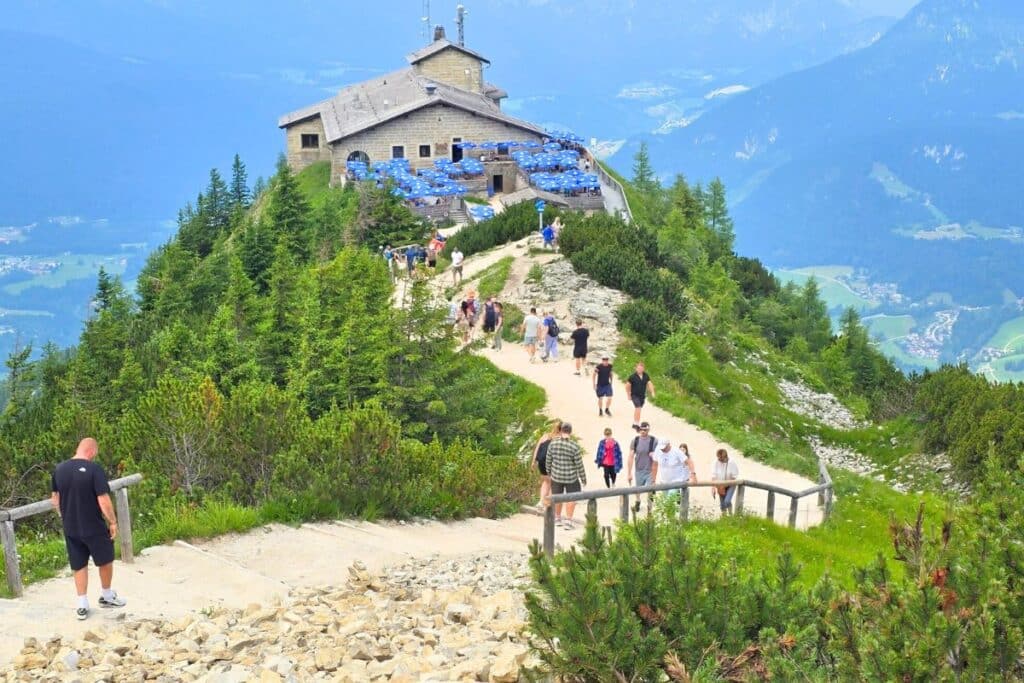
The project was a feat of construction, with a steep mountain road carved into rock and a brass elevator that ascends through a mountain shaft to the building itself. It was spared from bombing during World War II, possibly due to its limited strategic importance.
After the end of World War II, the building was taken over by the Bavarian government, which later opened it to the public.
Today, it’s a popular historical site that balances education with tourism.
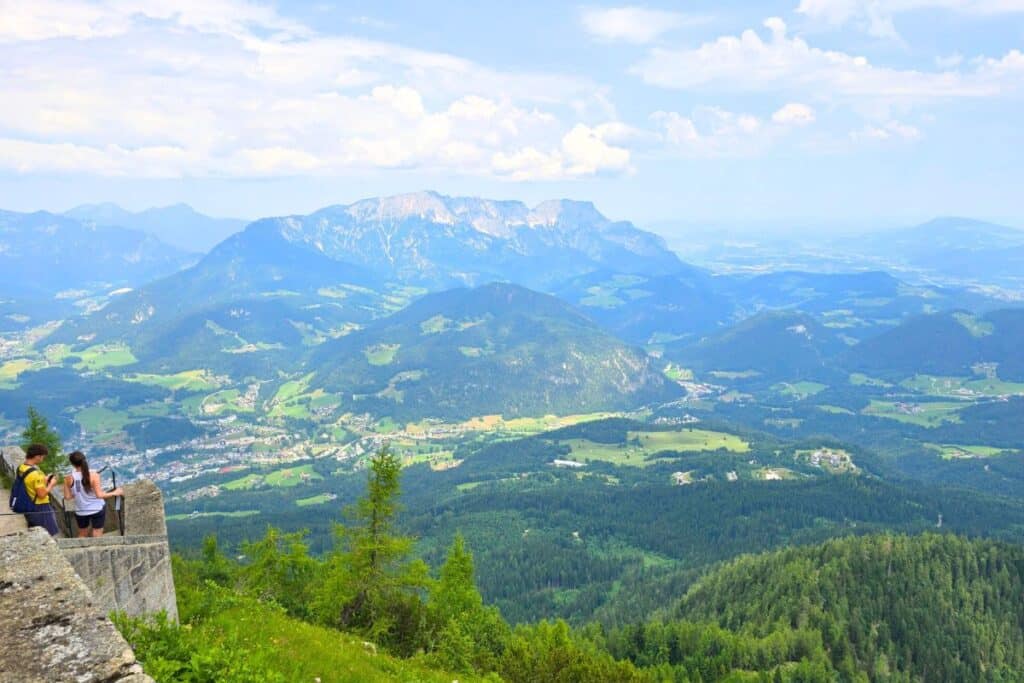
How to Visit the Eagle’s Nest
Visiting the Eagle’s Nest isn’t as simple as driving to the top. The only way to access the building is via a special shuttle bus that departs from the Documentation Center area just outside Berchtesgaden, in Obersalzberg.
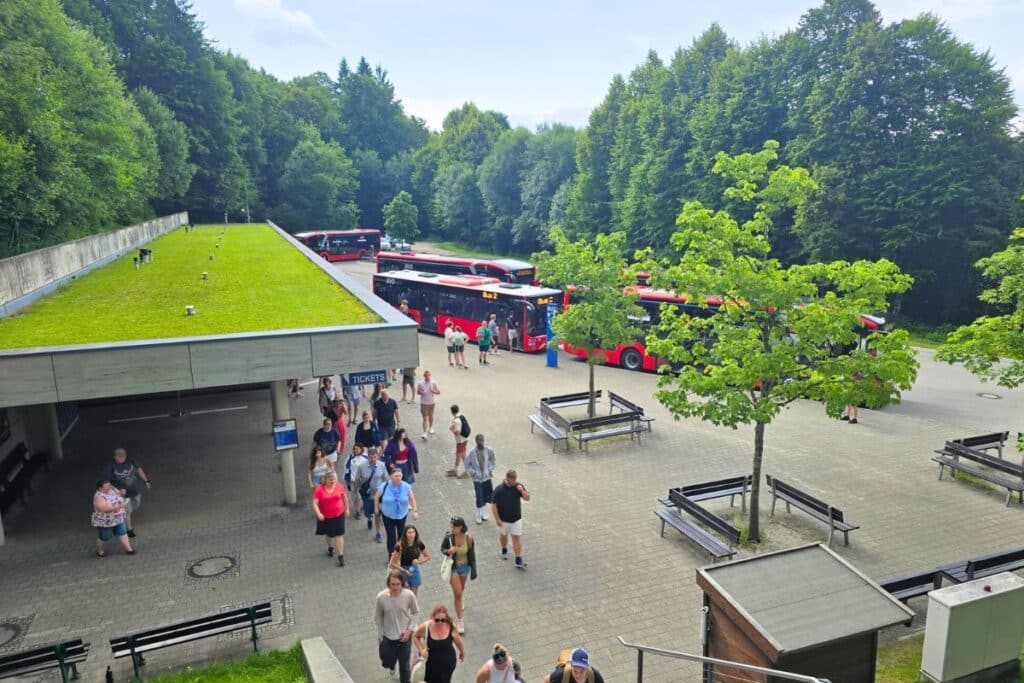
Day Trips from Munich or Salzburg
If you’re staying in Munich or Salzburg and want to visit the Eagle’s Nest without driving, there are a few great day trips. These tours avoid the need for making your own reservations.
Here are the top Eagle’s Nest day trips from Munich and Salzburg:
- Berchtesgaden and Eagle’s Nest Day Trip from Munich
- Skip-the-Line: Eagle’s Nest in Berchtesgaden Tour from Salzburg
But it’s not necessary to book a tour if you have your own wheels. You just need to book a shuttle reservation.
Discover Cars
My favorite rental car booking site to use all over the world. No hidden costs, free cancellation, and 24/7 customer support.
Shuttle Bus + Tickets 🚌
Private vehicles are not allowed on the steep private road leading to the top. You’ll need to purchase a round-trip ticket on the shuttle from the official website or in person at the station.
Tip: If you’re driving from elsewhere in Bavaria, don’t underestimate how long the drive takes. We did and missed our scheduled shuttle time. Luckily, we were able to get on the next bus.
Advance booking is highly recommended, especially in high season. Timed tickets do sell out. Buses run roughly from mid-May through late October, depending on weather conditions.
Four buses go up and down at the same time and your ticket will show which of the four buses you should board.
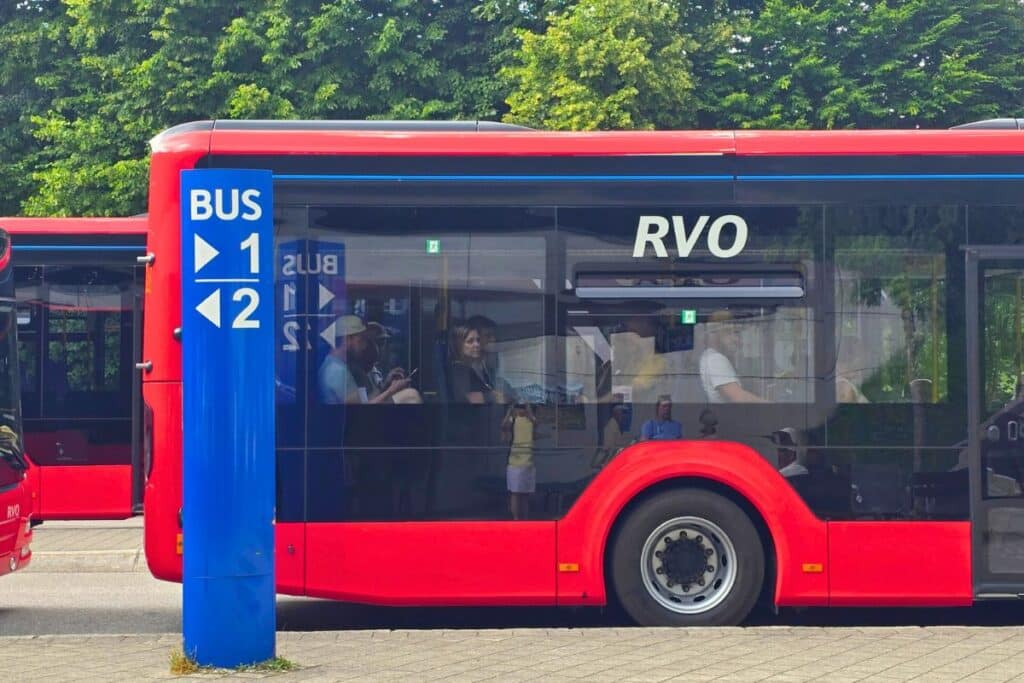
Once you arrive at the departure point:
- You’ll take a 20-minute bus ride up the mountain on a breathtaking road with hairpin turns and dramatic views.
- The bus drops you off at the tunnel entrance to the brass elevator, which ascends 124 meters through solid rock in 41 seconds.
For more information and to purchase tickets, visit the Online ticket shop Eagle’s Nest | Kehlsteinhaus.
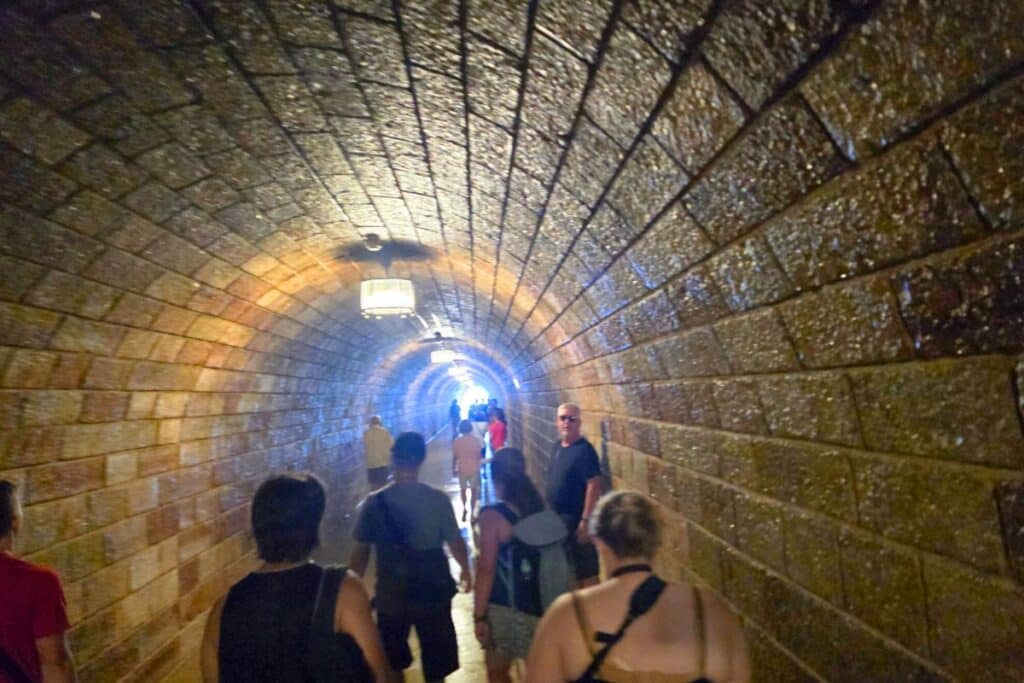
Ticket Tips 🎟️
- Day tickets include the shuttle and elevator ride, but check for additional costs if you’re combining this with a visit to the Documentation Center or booking a guided tour.
- Last bus down is usually mid-to-late afternoon, so plan accordingly.
- If you get to the top and decide you want to change your return time, look for the automated kiosk near the bus stop.

Public Transport 🚍
If you’re arriving via Berchtesgaden Hbf (train station), take a local bus or taxi to the shuttle departure point. The ride takes about 15 minutes.
Where to Stay: Best Hotels in Berchtesgaden
Berchtesgaden is the charming Alpine town at the base of the mountain, and it makes the perfect home base for your visit.
If you’re planning to visit other regional sights like Lake Königssee or the Berchtesgaden National Park, staying in town will put everything within easy reach.
Here are a few standout options:
Hotel Edelweiss Berchtesgaden – If you’re looking for comfort and Alpine flair, this is your spot. It’s centrally located, has a rooftop spa, and offers incredible mountain views. You’re just a short walk from the train station and town center.
Hotel AlpinaRos – The country-style rooms at this Alpine lodge all feature lovely balconies. Located just a 5-minute walk from the train station, it’s especially convenient if you’re visiting the area without a car.
Kempinski Hotel Berchtesgaden – This luxurious retreat is a little outside of town, but it’s well worth the trip. This 5-star resort features a spa and wellness center, plus the 2* MICHELIN Gourmet Restaurant PUR. It’s a splurge, for sure. But it’s a destination on its own.
What to See at the Top
Once you arrive at the top of Kehlstein Mountain, the views steal the show—but there’s more to take in than just the panorama.
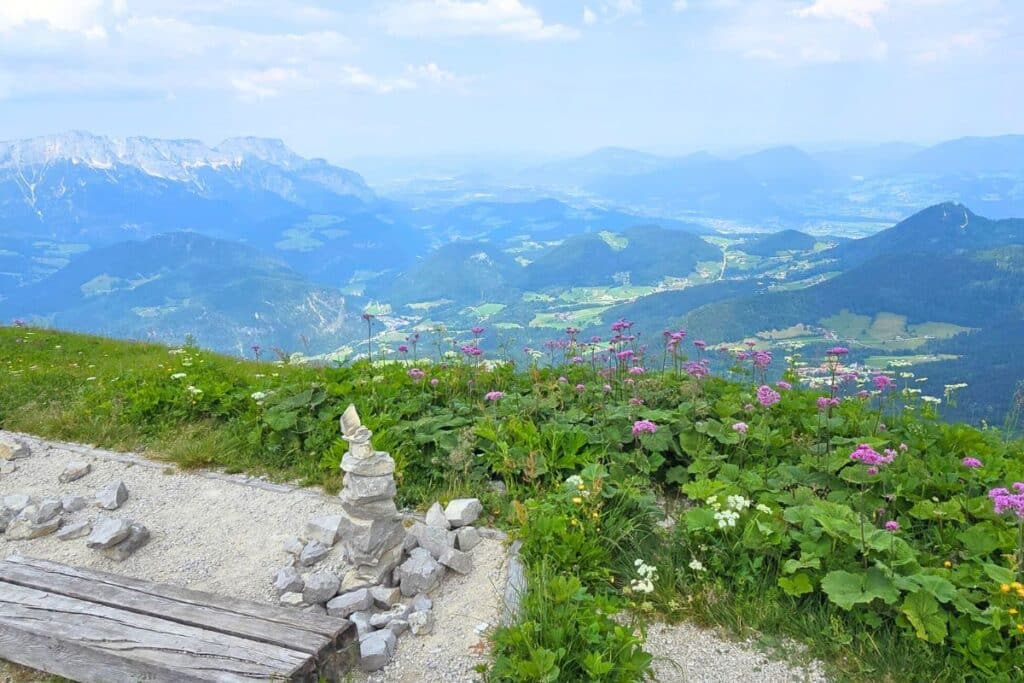
1. Panoramic Views of the Bavarian Alps
On a clear day, the views from the sun terrace stretch across the Berchtesgaden Alps, deep into Austria, and even as far as Salzburg.
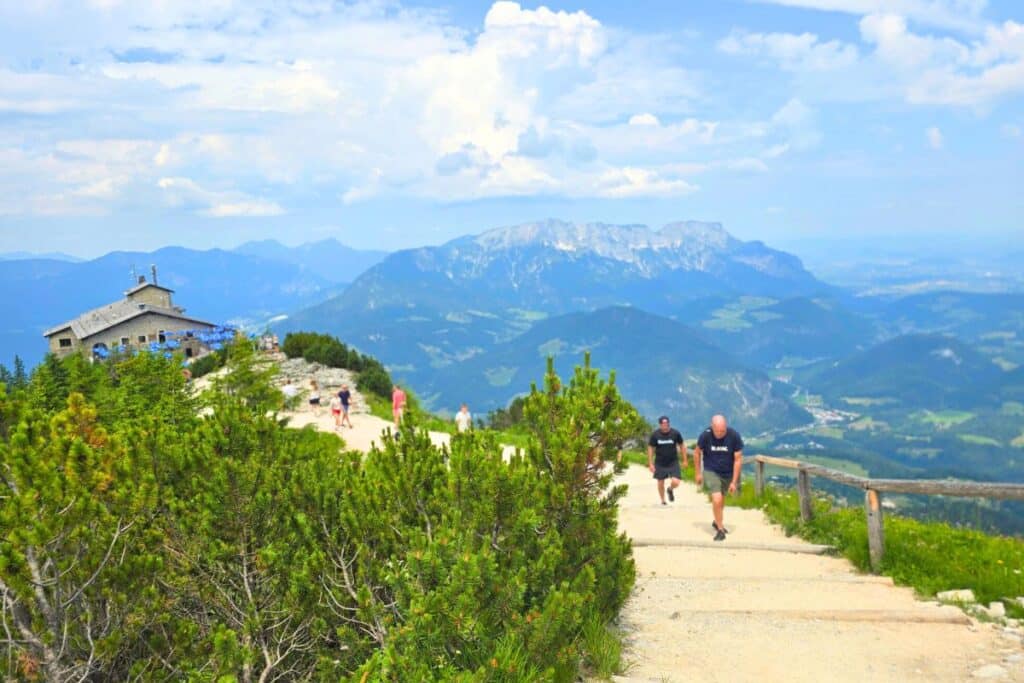
The surrounding mountains frame the building beautifully. Bring your camera—and a windbreaker.
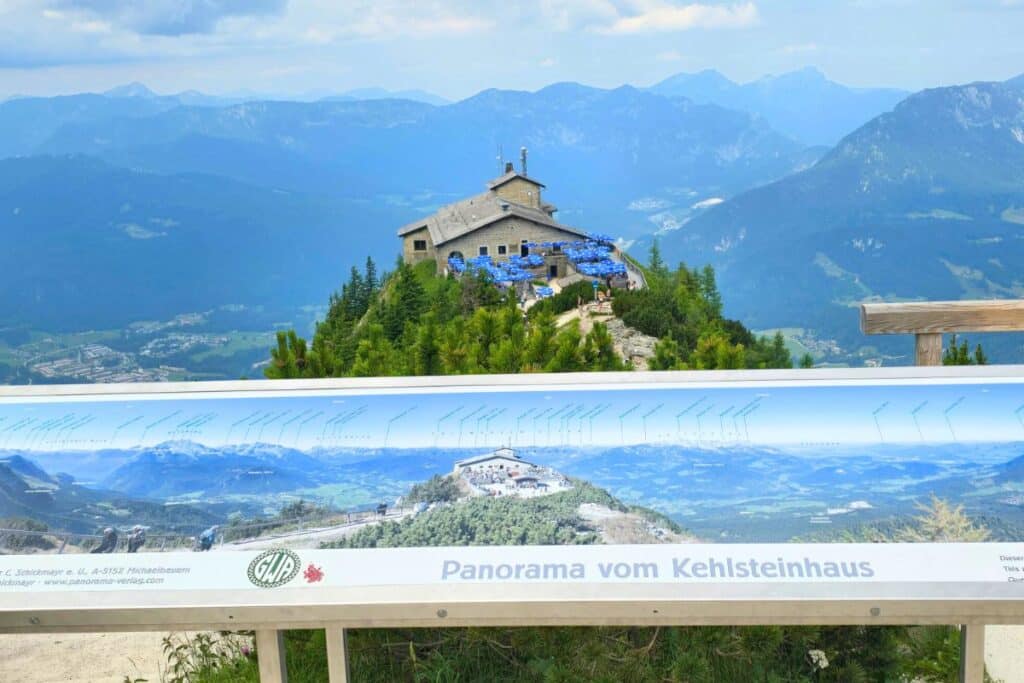
2. The Historic Building and Dining Room
The original mountain-top retreat has been converted into a restaurant and beer garden, but much of the architecture remains the same.
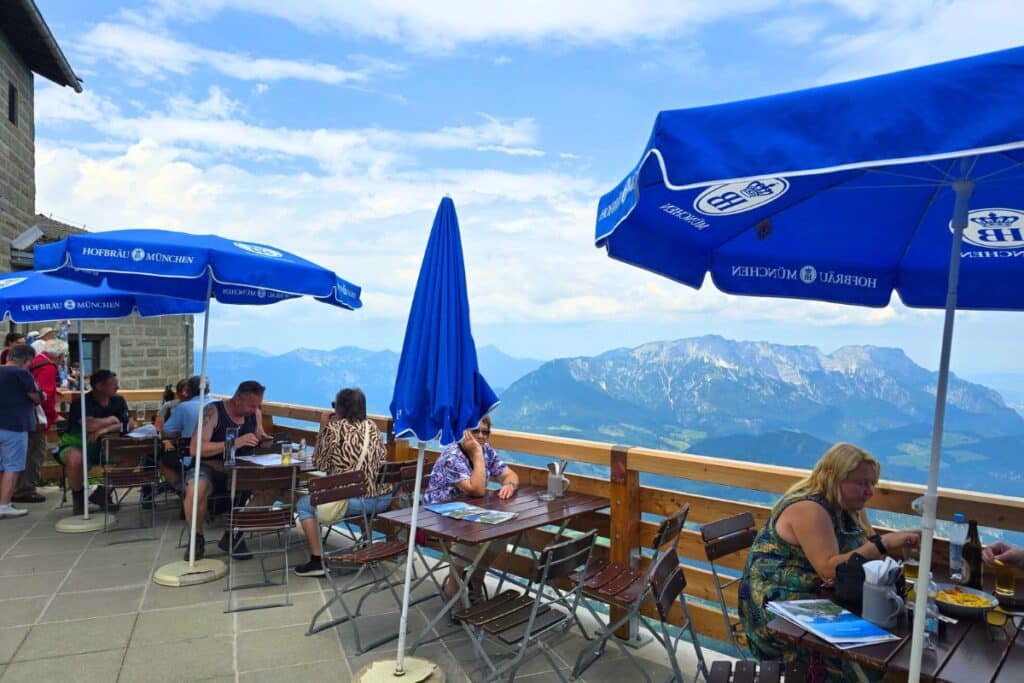
The main dining room still features a red marble fireplace that was a gift from Mussolini.
️3. The Elevator and Tunnel Shaft
The brass elevator that whisks you up to the top is an experience in itself.
It’s dimly lit, lined with polished brass, and unchanged since it was built in the 1930s. Unfortunately, no photos are allowed inside the elevator.
You enter via a long granite tunnel, which feels straight out of a spy movie.

4. The Outdoor Viewing Areas
Step beyond the restaurant to access several hiking trails and viewpoints that wrap around the peak. Some paths lead even higher than the building itself and offer the best views of all.
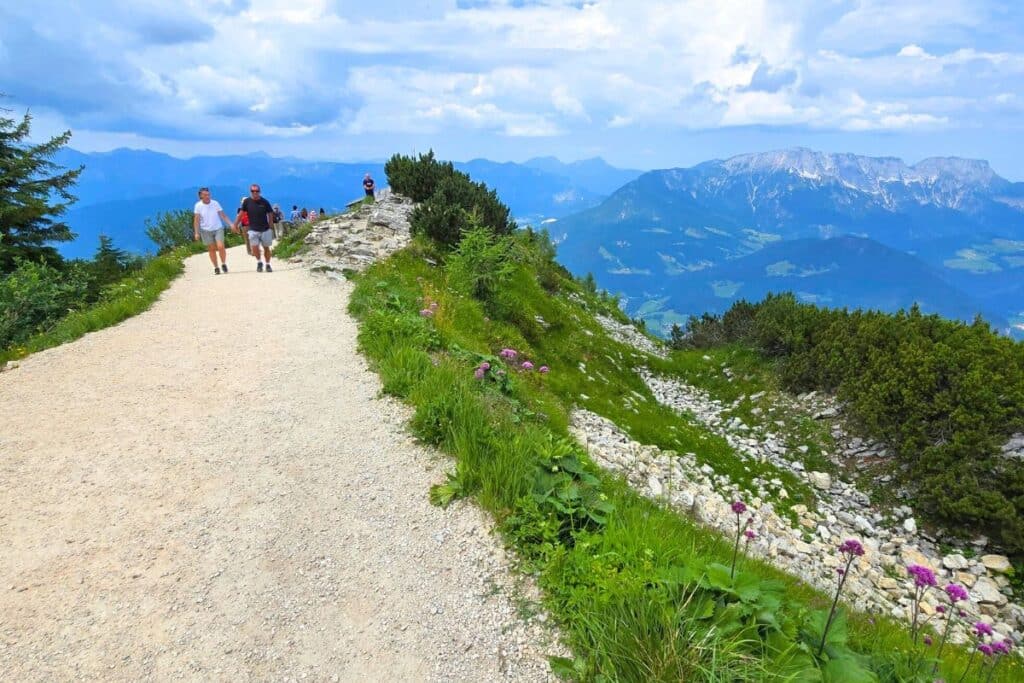
Note: Paths may be closed during winter months or in poor weather conditions, so check ahead.
Is the Eagle’s Nest Worth Visiting?
Absolutely—but it depends on what you’re expecting.
If you’re coming purely for the history, keep in mind the building itself doesn’t house a traditional museum or exhibit.
For that, you’ll want to visit the Documentation Center Obersalzberg, located at the base near the parking lot. It offers a powerful look into the Nazi regime, the use of the Eagle’s Nest, and the end of World War II in this region.
If you’re coming for the views, the Eagle’s Nest is unmatched. The mix of Alpine beauty and historical weight gives this place a mood that’s hard to describe—part surreal, part sobering.
Looking for more great destinations in Germany, start here:
Rothenburg ob der Tauber: Germany’s Fairy Tale Christmas Village
Lindau, Germany: The Loveliest Bavarian Island You’ve Never Heard Of
The Best of Bavaria: Neuschwanstein Castle, Germany
The Prettiest Little Castle in Germany is a Real Life Fairytale 🏰



